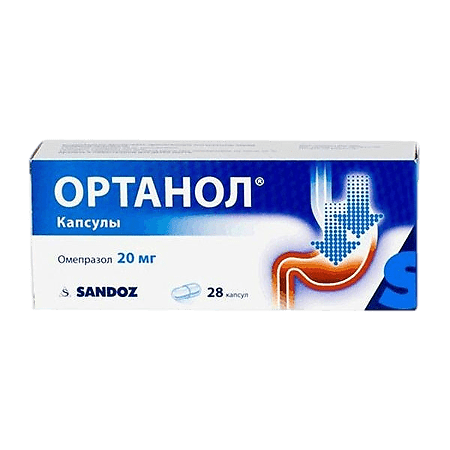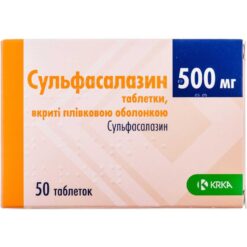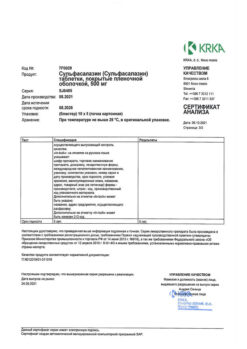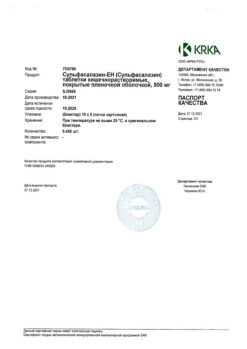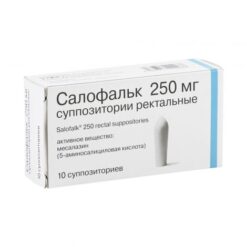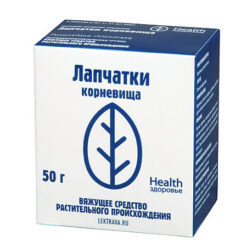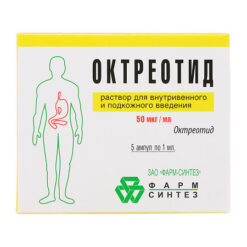No products in the cart.
Ortanol, 20 mg 28 pcs.
€4.58 €4.07
EAN: 3838957057146
SKU: 218150
Categories: Medicine, Stomach, intestines, liver, Ulcer and gastritis
Description
Omeprazole is an H+,K+-ATPase inhibitor.
Pharmacodynamics
Omeprazole inhibits the enzyme H+/ K+-ATPase (“proton pump”) in the parietal cells of the stomach and thereby blocks the final stage of hydrochloric acid secretion. This leads to a decrease in basal and stimulated secretion, regardless of the nature of the stimulus.
After a single oral dose, the effects of omeprazole occur within the first hour and last for 24 hours. Maximum effect is reached after 2 hours. After discontinuation of the drug secretory activity is fully restored after 3-5 days.
Pharmacokinetics
Omeprazole is rapidly absorbed from the gastrointestinal tract, Cmax in plasma is reached after 0.5-3.5 h. Bioavailability is 30-40%. The binding to plasma proteins is about 95%.
Omeprazole is almost completely metabolized in the liver with the isoenzyme CYP2C19 to form 6 pharmacologically inactive enzymes. T1/2 is 0.5-1 h.
It is excreted as metabolites by the kidneys (70-80%) and in the bile (20-30%).
In patients with hepatic insufficiency bioavailability increases significantly, T1/2 increases up to 3 h.
In elderly patients, the elimination rate decreases and the bioavailability increases.
Indications
Indications
Symptoms of gastroesophageal reflux such as heartburn, sour belching.
Pharmacological effect
Pharmacological effect
Orthanol is an inhibitor of H+,K+-ATPase.
Pharmacodynamics
Omeprazole inhibits the enzyme H+/K+-ATPase (“proton pump”) in the parietal cells of the stomach and thereby blocks the final stage of hydrochloric acid secretion. This leads to a decrease in the level of basal and stimulated secretion, regardless of the nature of the stimulus.
After a single oral dose of the drug, the effect of omeprazole occurs within the first hour and continues for 24 hours. The maximum effect is achieved after 2 hours. After stopping the drug, secretory activity is completely restored after 3–5 days.
Pharmacokinetics
Omeprazole is rapidly absorbed from the gastrointestinal tract, Cmax in blood plasma is achieved after 0.5–3.5 hours. Bioavailability is 30–40%. Communication with blood plasma proteins is about 95%.
Omeprazole is almost completely metabolized in the liver with the participation of the CYP2C19 isoenzyme with the formation of 6 pharmacologically inactive enzymes. T1/2 – 0.5–1 hour.
Excreted in the form of metabolites by the kidneys (70–80%) and bile (20–30%).
In patients with liver failure, bioavailability increases significantly, T1/2 increases to 3 hours.
In elderly patients, the rate of elimination decreases, bioavailability increases.
Special instructions
Special instructions
Omeprazole is not intended for use in cases of occasional heartburn (heartburn less than 2 times a week).
Before starting therapy with omeprazole, it is necessary to exclude the presence of a malignant process, because Treatment, masking symptoms, can delay the correct diagnosis.
Omeprazole will reduce the acidity of the stomach, which may slightly increase the risk of digestive tract infections.
Impact on the ability to drive vehicles and perform other activities that require concentration and speed of psychomotor reactions
During treatment with omeprazole, dizziness, drowsiness, and blurred vision may occur, so care should be taken when driving vehicles and performing other potentially hazardous activities that require increased concentration and speed of psychomotor reactions.
Special precautions when disposing of unused drug. Not required.
Active ingredient
Active ingredient
Omeprazole
Composition
Composition
1 capsule contains:
Active substance:
omeprazole 20 mg;
Excipients:
low-substituted hyprolose;
MCC;
lactose anhydrous;
croscarmellose sodium;
povidone;
polysorbate 80;
hypromellose phthalate;
dibutyl sebacate;
talc;
Capsule shell:
hypromellose; carrageenan; potassium chloride; titanium dioxide; iron (III) oxide yellow; iron (III) oxide red; water; ink for writing (iron (III) oxide black (E172), shellac, anhydrous ethanol, anhydrous isopropanol, propylene glycol, butanol, ammonium hydroxide, potassium hydroxide, purified water).
Pregnancy
Pregnancy
The results of three prospective epidemiological studies (more than 1000 observations) showed that the use of omeprazole in pregnant women does not have a negative effect on the course of pregnancy and the health of the fetus/newborn. However, before using the drug during pregnancy, it is recommended to consult a doctor.
Omeprazole passes into breast milk. If it is necessary to use the drug during lactation, the issue of stopping breastfeeding should be decided.
Contraindications
Contraindications
hypersensitivity to omeprazole or other components of the drug;
age under 18 years;
simultaneous use with the drug nelfinavir;
rare hereditary forms of galactose intolerance, lactase deficiency or glucose/galactose malabsorption (because the composition contains lactose).
With caution: before using the drug, you should consult your doctor in the following cases:
the presence of previously diagnosed gastric ulcer, severe liver disease accompanied by liver failure, jaundice, previous surgical intervention on the gastrointestinal tract;
the presence of alarming symptoms: significant loss of body weight, repeated vomiting, vomiting blood (hematemesis), impaired swallowing, change in the color of stool (tarry stools – melena);
the appearance of new symptoms or changes in existing gastrointestinal symptoms; providing symptomatic treatment for indigestion or heartburn for 4 weeks or more; simultaneous use with one or more of the following drugs: atazanavir, clopidogrel, digoxin, erlotinib, ketoconazole, itraconazole, warfarin, cilostazol, diazepam, phenytoin, saquinavir, tacrolimus, clarithromycin, voriconazole, rifampicin, St. John’s wort preparations.
It is also recommended to consult a doctor before using Ortanol® during pregnancy and breastfeeding.
The drug should not be used for prophylactic purposes.
Side Effects
Side Effects
Allergic reactions: uncommon – urticaria, skin rash, itching; rarely – fever, angioedema, anaphylactoid reactions; very rarely – eosinophilia.
From the gastrointestinal tract: often – nausea, vomiting, abdominal pain, diarrhea or constipation, flatulence; infrequently – increased activity of transaminases and alkaline phosphatase; rarely – dry mouth, stomatitis, gastrointestinal candidiasis, hepatitis (with or without jaundice); very rarely – liver failure (in patients with previous severe liver disease).
From the nervous system: often – headache; infrequently – dizziness, paresthesia, drowsiness, insomnia; rarely – agitation, reversible confusion, depression, disturbance of taste; very rarely – aggression, hallucinations; against the background of severe liver disease – encephalopathy.
From the skin: infrequently – dermatitis; rarely – photosensitivity, alopecia; very rarely – exudative erythema multiforme, Stevens-Johnson syndrome (severe erythema multiforme, characterized by the appearance of spots and blisters on the skin and mucous membranes against a background of high fever and joint pain), toxic epidermal necrolysis.
From the senses: rarely – visual impairment.
From the musculoskeletal system: rarely – myalgia, arthralgia; very rarely – muscle weakness.
From the respiratory system: rarely – bronchospasm.
From the urinary system: rarely – interstitial nephritis.
From the hematopoietic organs: rarely – leukopenia, thrombocytopenia; very rarely – agranulocytosis, pancytopenia.
Other: infrequently – peripheral edema; rarely – increased sweating, hyponatremia; very rarely – hypomagnesemia, gynecomastia.
Interaction
Interaction
You should consult your doctor before taking Ortanol® when treating one or more of the drugs listed in this section.
When used concomitantly with omeprazole, an increase or decrease in the absorption of drugs whose bioavailability is largely determined by the acidity of gastric juice (including erlotinib, ketoconazole, itraconazole, iron supplements and cyanocobalamin) may be observed.
When used concomitantly with omeprazole, a significant decrease in plasma concentrations of atazanavir may be observed. Simultaneous use is possible only as prescribed by a doctor (the dosage and regimen of atazanavir are adjusted if necessary).
The bioavailability of digoxin when used simultaneously with omeprazole increases by 10% (adjustment of the digoxin dosage regimen may be required). Caution should be exercised when these drugs are used concomitantly in elderly patients.
With simultaneous use of omeprazole with clopidogrel, a decrease in the antiplatelet effect of the latter is observed.
When used simultaneously with omeprazole, it is possible to increase the plasma concentration and increase T1/2 of warfarin, cilostazol, diazepam, phenytoin, as well as other drugs metabolized in the liver via the CYP2C19 isoenzyme (a dose reduction of these drugs may be required).
Omeprazole, when used simultaneously, increases the plasma concentration of tacrolimus, which may require dose adjustment.
When used simultaneously with omeprazole, an increase in plasma concentrations of saquinavir/ritonavir is observed up to 70%, while the tolerability of treatment in patients with HIV infection does not deteriorate.
Concomitant use with inhibitors of CYP2C19 and CYP3A4 isoenzymes (such as clarithromycin, voriconazole) may lead to an increase in plasma concentrations of omeprazole, which may require dose adjustment of omeprazole in patients with severe liver failure in case of long-term use.
Inducers of the CYP2C19 and CYP3A4 isoenzymes (for example, rifampicin, St. John’s wort (Hypericum perforatum) preparations) can increase the metabolism of omeprazole, thereby reducing its plasma concentration.
No clinically significant interaction of omeprazole with antacids, theophylline, caffeine, quinidine, lidocaine, propranolol, metoprolol, ethanol has been established.
Overdose
Overdose
Symptoms: dry mouth, nausea, vomiting, increased sweating, headache, drowsiness, confusion, blurred vision, tachycardia.
Treatment: symptomatic. There is no specific antidote. Hemodialysis is ineffective.
Storage conditions
Storage conditions
In a place protected from light, at a temperature not exceeding 25 °C
Shelf life
Shelf life
2 years
Manufacturer
Manufacturer
Lek d.d., Slovenia
Additional information
| Shelf life | 2 years |
|---|---|
| Conditions of storage | In a light-protected place, at a temperature not exceeding 25 °C |
| Manufacturer | Lek d.d., Slovenia |
| Medication form | enteric capsules |
| Brand | Lek d.d. |
Other forms…
Related products
Buy Ortanol, 20 mg 28 pcs. with delivery to USA, UK, Europe and over 120 other countries.

